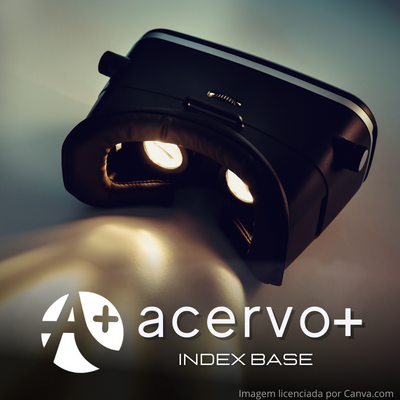Intervenção por realidade virtual associada a esteira ergométrica sobre o congelamento de marcha na Doença de Parkinson
##plugins.themes.bootstrap3.article.main##
Resumo
Objetivo: Investigar se a intervenção por Realidade Virtual associado a esteira ergométrica beneficiará o congelamento de marcha no paciente com Doença de Parkinson. Métodos: Um estudo quantitativo, longitudinal, experimental, não controlado e aberto. Incluindo 2 pacientes de ambos os sexos e idade de 77 anos, com diagnóstico de Doença de Parkinson e que possuem congelamento de marcha. Ocorreu em uma clínica de instituto superior, 2 vezes por semana durante 5 semanas, com duração de 30 minutos a sessão. Foram avaliados no pré e pós-tratamento por meio de escalas de Índice de Marcha Dinâmica (IDM), Escala de Congelamento de Marcha (FOG-Q) e Escala Unificada de Avaliação da Doença de Parkinson (UPDRS) para o estadiamento da doença. Resultados: A intervenção levou a uma melhora discreta dos instrumentos de avaliação utilizados, (p=0,684) em IDM, (p=0,776) em FOG-Q e (p=0,544) em UPDRS, enfatizando a melhora principalmente da marcha com dupla tarefa. Conclusão: A intervenção mostrou benefícios no congelamento de marcha, evidenciando a efetividade deste tratamento devido a evolução positiva dos instrumentos utilizados, todavia, não foi um estudo com número elevado de sessões e de participantes, limitando os dados representados.
##plugins.themes.bootstrap3.article.details##
Copyright © | Todos os direitos reservados.
A revista detém os direitos autorais exclusivos de publicação deste artigo nos termos da lei 9610/98.
Reprodução parcial
É livre o uso de partes do texto, figuras e questionário do artigo, sendo obrigatória a citação dos autores e revista.
Reprodução total
É expressamente proibida, devendo ser autorizada pela revista.
Referências
2. BEKKERS EMJ, et al. Do patients with Parkinson’s disease with freezing of gait respond differently than those without to treadmill training augmented by virtual reality?. Neurorehabilitation and neural repair, 2020; 34(5): 440-449.
3. BLAUWENDRAAT C, et al. The genetic architecture of Parkinson's disease. The Lancet Neurology, 2020; 19(2): 170-178.
4. CAGGIANO V, et al. Midbrain circuits that set locomotor speed and gait selection. Nature, 2018; 553(7689): 455-460.
5. CAPECCI M, et al. Clinical effects of robot-assisted gait training and treadmill training for Parkinson's disease. A randomized controlled trial. Annals of physical and rehabilitation medicine, 2019; 62(5): 303-312.
6. COHEN RG, et al. Fay B. Recovery from multiple APAs delays gait initiation in Parkinson’s disease. Frontiers in human neuroscience, 2017; 11: 60.
7. CUI CK e LEWIS SJG. Future therapeutic strategies for freezing of gait in Parkinson’s disease. Frontiers in Human Neuroscience, 2017; 15.
8. EHGOETZ MARTENS KA, et al. Evidence for subtypes of freezing of gait in Parkinson's disease. Movement Disorders, 2018; 33(7): 1174-1178.
9. FENG H, et al. Virtual reality rehabilitation versus conventional physical therapy for improving balance and gait in Parkinson’s disease patients: a randomized controlled trial. Medical science monitor: international medical journal of experimental and clinical research, 2019; 25: 4186.
10. FEIGIN, Valery L. et al. Global, regional, and national burden of neurological disorders, 1990–2016: a systematic analysis for the Global Burden of Disease Study 2016. The Lancet Neurology, 2019; 18(5): 459-480.
11. GAO C, et al. Freezing of gait in Parkinson’s disease: pathophysiology, risk factors and treatments. Translational neurodegeneration, 2020; 9(1): 1-22.
12. GAßNER H, et al. Treadmill training and physiotherapy similarly improve dual task gait performance: a randomized-controlled trial in Parkinson’s disease. Journal of Neural Transmission, 2022; 129(9): 1189-1200.
13. GE HL, et al. The prevalence of freezing of gait in Parkinson’s disease and in patients with different disease durations and severities. Chinese Neurosurgical Journal, 2020; 6(1): 1-11.
14. JANEH O e STEINICKE F. A Review of the Potential of Virtual Walking Techniques for Gait Rehabilitation. Frontiers in Human Neuroscience, 2021; 15.
15. LEI C, et al. Effects of virtual reality rehabilitation training on gait and balance in patients with Parkinson's disease: A systematic review. PLoS One, 2019; 14(11): e0224819.
16. LU M, et al. Quantifying Parkinson’s disease motor severity under uncertainty using MDS-UPDRS videos. Medical Image Analysis, 2021; 73: 102179.
17. MANCINI M, et al. Clinical and methodological challenges for assessing freezing of gait: future perspectives. Movement Disorders, 2019; 34(6): 783-790.
18. MIRELMAN A, et al. Gait impairments in Parkinson's disease. The Lancet Neurology, 2019; 18(7): 697-708.
19. OPARA JA, et al. Motor assessment in Parkinsons disease. Ann Agric Environ Med, 2017; 24(3): 411-415.
20. OKUMA Y, et al. A prospective study of falls in relation to freezing of gait and response fluctuations in Parkinson's disease. Parkinsonism & related disorders, 2018; 46: 30-35.
21. PAZZAGLIA C, et al. Comparison of virtual reality rehabilitation and conventional rehabilitation in Parkinson’s disease: a randomised controlled trial. Physiotherapy, 2020; 106: 36-42.
22. PELOSIN E, et al. Motor-cognitive treadmill training with virtual reality in Parkinson's disease: the effect of training duration. Frontiers in aging neuroscience, 2022; 871.
23. PINTO ESM, et al. Influência da dupla tarefa na esteira ergométrica sobre a doença de Parkinson. Ciência em movimento, 2015; 17(35): 9-18.
24. POZZI NG, et al. Freezing of gait in Parkinson’s disease reflects a sudden derangement of locomotor network dynamics. Brain, 2019; 142(7): 2037-2050.
25. ROSE T, et al. Immersion of virtual reality for rehabilitation-Review. Applied ergonomics, 2018; 69: 153-161.
26. SON M, et al. Evaluation of the turning characteristics according to the severity of Parkinson disease during the timed up and go test. Aging clinical and experimental research, 2017; 29(6): 1191-1199.
27. TRIEGAARDT J, et al. The role of virtual reality on outcomes in rehabilitation of Parkinson’s disease: meta-analysis and systematic review in 1031 participants. Neurological Sciences, 2020; 41(3): 529-536.
28. WEISS D, et al. Freezing of gait: understanding the complexity of an enigmatic phenomenon. Brain, 2020; 143(1): 14-30.
29. YAMAGAMI M, et al. Effects of virtual reality environments on overground walking in people with Parkinson disease and freezing of gait. Disability and Rehabilitation: Assistive Technology, 2020; 1-8.

